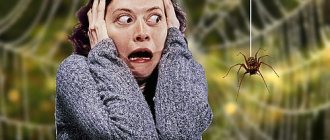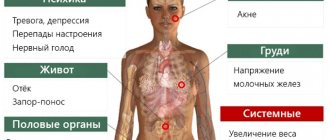May 24, 2021
Due to established public opinion and stereotypes about people with non-traditional orientation, many people develop hatred towards homosexuals from a very early age. From birth, any person develops various kinds of phobias, which sooner or later will affect his life. Some people are extremely skeptical and even negative about a person who was born different from everyone else, born with the awareness that his attractions are more susceptible to people of the same sex than people of the opposite sex. This type of emerging hatred towards people with non-traditional sexual orientation is called homophobia. Homophobia is aversion to people who belong to minorities and do not conform to the usual norms of society. This negative reaction is imposed on any person everywhere, on television channels, on Internet resources, and sometimes even at the political level; there are individuals who clearly promote hatred of homosexuals, insulting them in every possible way and proving that they are “wrong.” This is a very modern problem - the influence of society on the minds of people, on contempt and infringement of the rights of various minorities. As a rule, this phobia develops in people with low self-esteem, a narrow outlook and a small social circle. This phobia has an extremely detrimental effect on all aspects of a person’s life. This type of people begins to have problems communicating, they begin to react sharply or avoid dialogues about people belonging to certain minorities. If you delay with this problem, then it may soon lead to the emergence of new complexes and phobias; do not hesitate, because it is much easier to cope with homophobia at the initial stage than with its already formed form. If you are unable to cope with this problem on your own, you need to seek help from a specialized psychologist.
Love has no gender!
How to properly respond to the emergence of homophobia?
If you notice tendencies towards homophobia in yourself, it is important not to run away from the problem, but to acknowledge its existence in order to find its cause and immediately begin to fight it. To do this, you also need to react correctly to its appearance. You should work on yourself and your consciousness. First, you should relax your body and mind in order to approach the pressing issue with a fresh head. Organize your schedule and don't overload yourself. Literature, movies, music and much more can help you a lot, because even great people could belong to certain minorities. Also try to look your fear in the eye, talk to a gay person, this will make you understand that he is the same as you, only with different views on life. Don’t be silent about the problem, talk to your family and friends, they will be able to help you with advice and support you in difficult times. You need to understand that homophobia brings only negative things into your life and you should start coping with and getting rid of it as quickly as possible. Under no circumstances should you blame others for your problems. Don’t be inactive, don’t sit idly by, and don’t turn a blind eye to emerging problems. If, after this prevention, you are still haunted by this phobia and interfere with your life, then in this situation you need to seek help from a qualified specialist - a psychologist.
All people are equal, no one deserves hatred and aggression!
How to get rid of homophobia?
There is no clear answer to this complex question. Many people believe that there is no point in treating this disorder, since it is not a disease as such. If we take into account the fight against homophobia in society, propaganda methods are used here in terms of developing tolerance. The result depends on the characteristics of the individual and the traditions accepted in a particular country. Is it not so important whether homophobia is a disease or not? To eliminate symptoms, a conscious desire of the person himself is necessary, as well as an understanding that all people are different and same-sex relationships can exist.
A specialist who relieves various fears and phobias, Nikita Valerievich Baturin.
Symptoms of homophobia
Homophobia, like any other phobia, also has a number of reasons that precede this problem. One of them lies in our childhood, when parents could give an inappropriate upbringing, talk about the impossibility of existence of people belonging to certain minorities, belittling homosexuals in the face of other “normal” people, in their opinion. Another reason could be religion, fear of sin and divine punishment. And of course, the most modern reason is indoctrination from the media or other people.
Homophobia has a number of characteristic symptoms. The most common ones will be presented below:
- Physiological (tremor, nausea, high blood pressure and palpitations, dry mouth, elevated body temperature and much more);
- Increased aggression towards minorities;
- Spreading and listening to negative information about minorities;
- Insulting these people;
- Violence and fights without reason;
- Noticeable hatred.
Homophobia: what in the world is it?
All over the planet, opponents of relationships between representatives of the same sex show obvious negativism. The symbol of allies of homophobia is a rainbow flag, like that of sexual minorities, but the rainbow is crossed out by a large black line in a circle. In some Muslim societies, homosexuality is punishable by death. The most dangerous countries for bisexuals, gays, lesbians, transgender people: Pakistan, Uganda, Afghanistan, Yemen, Sudan.
Briefly about homophobia in the USA
In an active and dynamic country, the day against homophobia traditionally begins with a minute of silence. It is dedicated to those who died from HIV at the hands of aggressive people against LGBT people. Despite the modern structure of the country, until recently in some states there was a ban on same-sex relationships, not to mention marriage. Now this issue has been resolved, but homophobes have not gone away; many individuals despise and beat sexual minorities.
What is homophobia in Europe?
Gay activists celebrate the day of struggle against their opponents on May 17. This date symbolizes the memory of the removal of homosexuality from the list of mental illnesses. An event with parades and protests provokes an active surge of aggressive people.
According to research by companies protecting sexual minorities, the level of homophobia continues to remain high in Europe. Figures indicate that about 27 percent of surveyed people of non-traditional orientation were subjected to violence from citizens of traditional relationships. About 30% were discriminated against during a job interview or immediately after employment.
What does homophobia mean in Russia?
In our country, homophobia is not considered a problem as such. This is due to centuries-old traditions and the corresponding social structure, in which any non-traditional relationships between people are not welcome.
Repeated attempts to hold gay rallies and meetings led to waves of protests with eggs, stones and other objects thrown at LGB activists. In 2013, an official resolution was adopted banning the promotion of non-traditional relationships, same-sex marriage, and the holding of related events and parades. In the West, Russia is often compared to a “hotbed of homophobia.”
Methods of working with homophobia
Is it possible to fight this phobia or get rid of it altogether? Absolutely yes. But to do this, you initially need to recognize and realize the presence and harmful influence of a phobia on your life, respond adequately to its appearance and have the desire to get rid of it, working on yourself and your consciousness.
The most effective methods to combat homophobia can be seen below:
- To solve this problem and eradicate the phobia yourself, you will need to carefully work on yourself. The main step will be to recognize the presence of this phobia. It can help you to talk to your loved ones who will support you in difficult times. A very good method is to talk alone with yourself; you need to give answers to fundamental questions: is this phobia really so critical? And why does it affect your life so much?
- The most effective way to solve this problem is to seek help from a qualified specialist - a psychologist. The specialist will do his best to help you find the root cause of your phobia. Provides individual consultation and appropriate therapy. Will collect the necessary tests. After completing all the procedures, he will formulate the right course of treatment for your phobia, after which you will forget about it forever.
- Psychoanalytic psychotherapy, which will be provided to you by a psychologist, will also be an extremely effective method. This therapy will help you understand the essence of your phobia, the reasons for the appearance of your fears, you will be provided with support, and at the end of the therapy you will usually get rid of the phobia that torments you.
The specialist works at a convenient time (Mon–Fri 10:00–20:00). The cost of qualified assistance is reasonable. Payment is possible in cash and by credit card. Contact us as soon as you need competent psychological help!
If you discover the presence of homophobia in yourself or in those who are dear to you, hurry up to seek the help of a competent psychotherapist, consulting psychologist - Andrey Filippov. Consultation is possible both in the office and online. You will immediately notice the positive effect of undergoing consultations (if you fully comply with all recommendations!).
Homophobia - fear of homosexuals, homosexuality
Homophobia (from ancient Greek ὁμός - similar, identical, ὁ φόβος - fear, dread) is a collective definition for various forms of negative reaction to manifestations of homosexuality, as well as to related social phenomena.
This concept refers, in its narrow sense, to uncontrollable negative emotions (fear, disgust, anger, etc.) towards people of homosexual orientation and same-sex sexual contacts. There are no separate clinical signs of homophobia in psychiatry or psychotherapy, and there is no such disease in the Diagnostic and Statistical Manual of Mental Disorders of the American Psychiatric Association. The term “homophobia” itself does not denote a mental disorder.
In a broader sense, it applies to any other manifestations of a negative attitude - feelings of hatred or hostility, aggressive actions against members of the homosexual community. The term “homophobe” contains connotations of fear and apprehension, and the transfer of this meaning to opponents of a tolerant attitude towards homosexuality can be regarded by them as an insult. As an alternative, more neutral terms such as “homonegative” are put forward.
- According to the Oxford English Dictionary, the word homophobia was originally used to mean “fear of men, or aversion to the male sex.”
- In psychiatry, homophobia was understood as the fear of monotony.
Introduction of the concept
- The term homophobia has replaced the previously rarely used concept of homosexophobia. A possible etymological ancestor of this word is the word homoerotophobia.
- George Weinberg in 1972 defines homophobia as “the fear of contact with homosexuals, and in the case of homosexuals, homophobia is understood as their disgust with themselves.”
- Later, in 1980, Hudson and Ricketts expanded the term to refer to "feelings of anxiety, disgust, anger, discomfort and fear that heterosexuals may experience towards lesbians and gays." Recently, it has become common to believe that homophobia arises from craving for a person of the same sex and fear of admitting this craving.
Psychologists note that it is not easy to draw a clear line between a negative attitude towards homosexuality and homophobia. Some believe that homophobia is associated with the presence of negative emotions (and not just with the declaration of a certain position) and/or an active fight against manifestations of homosexuality. For example, Hudson and Ricketts noted in their 1980 work that, due to the wide expansion of the term from the professional community into the popular culture of Western society, homophobia often came to mean any action against manifestations of homosexuality or a negative attitude towards them. They also accuse researchers of failing to distinguish between intellectual rejection of homosexuality (homonegativism) and personal, emotional reactions (homophobia). In order to more clearly distinguish between homophobia and homonegativism, these authors emphasized that homonegativism includes judgments based on an assessment of the morality of homosexual and bisexual orientations, as well as actions based on beliefs, preferences, law, social acceptability, or other intellectual reasons. Homophobia, in their opinion, should be understood as strictly phobic manifestations of strong emotions of fear, anxiety or disgust (which may or may not include a cognitive component) in the process of direct personal communication with persons of homosexual orientation. In the social sciences, however, not everyone shares this classification. Herek in 1991 argued against the continued use of the concept of homophobia because it places the primary blame on the individual rather than viewing anti-homosexual behavior as a reflection of cultural influences, and suggested using the term "anti-homosexual prejudice".
Due to the great attention paid to the problems of alternative sexual life in Western countries, psychologists and representatives of social sciences are actively studying the phenomenon of homophobia in both severe and moderate manifestations. There are many studies devoted to the roots of this phenomenon. The most popular explanation is “an attempt to divert possible suspicions of homosexual tendencies,” which is partly confirmed by experimental studies. For example, Henry Adams, Lester Wright Jr., and Bethany Lohr published an article in 1996 describing a study in which two groups of men, tentatively defined as “homophobes” and “non-homophobes” (the level of “homophobia” was determined in accordance with the questionnaire “ Homophobia Index” by Hudson and Ricketts), erotic stimuli of a heterosexual, female homosexual and male homosexual nature were presented. All subjects had an erection when shown images of a heterosexual and female homosexual nature, while a similar reaction to male homosexual subjects was observed only in men from the conditional “homophobe” group. At the same time, the results refuted the thesis that only subjects with aggressive behavior are “homophobic”: no difference was found between the “aggression indices” of the two groups.
Many Western researchers also pay attention to the role of traditional culture, traditional values and upbringing in the formation of homophobia. For example, Michael Kimmel examines the impact of dominant stereotypes of masculinity (“ultra-masculine behavior”), and argues that homophobic reactions are one way of emphasizing masculinity. One of the clearest confirmations of this position is “differentiated” homophobia, that is, a much more frequent manifestation of aggressiveness and hostility on the part of men towards “feminine” men. According to psychologists, there are significantly fewer homophobes among women than among men.
As is known from biology, the majority of males strive to dominate in their community, and since passive homosexual contact leads to a significant decrease in the status of the male in the community, males fighting with each other for a dominant position are afraid of what a stronger male might do to them homosexual contact from an active position. From this point of view, only the fear of being forced to participate in homosexual contact in a passive capacity can be called homophobia. Being in a hierarchical community, males take actions to eliminate the threat of coercion to participate in homosexual acts - these include both avoiding males posing such a threat and aggressively attacking them.
One of the types of homophobia that has attracted close attention from psychologists is internalized homophobia - a situation where homosexuals and bisexuals are afraid or disgusted by homosexuality, which can also mean an individual’s fear of becoming homosexual, fear of their own possible homosexual behavior. Some homosexuals, bisexuals and lesbians suppress their own homosexual desires and aspirations, while others do not do this, but may experience various negative emotions - a guilt complex, anxiety, remorse, etc. Some authors believe that calling such people latent homosexuals is incorrect, since a person is who he wants to be, but such a person does not want to be a homosexual.
Internalized homophobia can have various negative consequences for an individual's psychological health. In this case, a decrease in self-esteem, neuroticism, the development of various psychological complexes, depression and even suicidal intentions and attempts may be observed. Homosexuals and bisexuals who live secretly (hiding their orientation from others) and suffering from internalized homophobia may also develop a kind of paranoid mood, morbid suspiciousness and suspicion. Such a person always thinks that he will be “found out”, that he will be discovered, that they are laughing at him behind his back, discussing him, condemning him, and also that he may be fired from his job, that he is not accepted, or that he is treated poorly precisely because that they guess or know about his orientation. However, such fears may or may not have any basis in reality.
Homophobia as a hostile attitude towards representatives of sexual minorities is a very common phenomenon, which often leads to violence and insults, institutionalized homophobia, the so-called. heterosexism - discrimination against people of homosexual orientation by society.
A consequence of the spread of homophobia is the violation of the rights of sexual minorities, which manifests itself both in the legislation of some states and outside the legal field, through personal decisions of individual officials who prevent gays and lesbians from holding certain positions, holding rallies and marches.
For example, in Russia, until 2003, Order No. 185 of the Minister of Defense was in force, according to which homosexuality was classified as a mental disorder, which meant a ban on military service. In 2003, in connection with the adoption of a new regulation on military medical examination, introducing norms for the international classification of diseases, this restriction was canceled.
Most opponents of same-sex sexual relations claim that their attitude towards obvious manifestations of homosexuality is mainly related to the majority’s ideas about the norm, and therefore is not something reprehensible or abnormal. Some of them object to the legality of using the term “homophobia,” considering it an ideological cliché that is overly widely used to create an image of opponents of homosexuality as not completely normal and healthy people. In this regard, proposals arose to replace it with the more neutral term “homonegativism.” However, there is a point of view that homophobia is a form of xenophobia and, therefore, is associated primarily with the fear of others, those who stand out from the crowd.
Opponents of homosexuality believe that homosexuality is not a variant of the norm (as LGBT supporters claim), but a violation of it (a clinical disorder, a sin, a violation of public morality), and therefore, disgust towards this phenomenon is natural.
Traditional values are stable moral norms and ideas about a person’s life path, passed down from generation to generation and often having religious grounds. In traditional movements of Christianity, Judaism and Islam, manifestations of homosexual orientation are considered a grave sin, and if those living in sin should be called to repentance, then the promotion of a sinful lifestyle, according to religious activists, should be fought. Thus, religious activists demand that the state ban public actions of people with homosexual orientation (gay parades, etc.), as well as criminal or administrative sanctions for such actions. Traditionalists may also blame homosexuals for the destruction of the reproductive family.
In connection with the intention of sexual minorities to hold a gay pride parade in Moscow in 2006, the Public Opinion Foundation organized a sociological survey, as a result of which the following trends were discovered in the attitude of Russian society towards sexual minorities (gays and lesbians):
...in Russian society there is no unambiguous attitude towards representatives of sexual minorities:
- Almost half of the respondents (47%), according to their admission, view homosexuals and lesbians with condemnation (and this opinion is most often shared by men and representatives of the least resourced social groups: older people, poorly educated citizens and village residents);
- Slightly fewer (40%) say that they treat representatives of sexual minorities without condemnation (this position is more often shared by women, young people, highly educated respondents, as well as residents of Moscow and other megacities).
- Another 13% of respondents found it difficult to express their attitude towards people of non-traditional sexual orientation.
Different population groups express different attitudes towards sexual minorities. For example, the clannishness and intolerance towards atypical peers characteristic of teenage boys generally results in a significant rejection of homosexuality: during a survey of 1,429 Moscow schoolchildren in grades 7, 9 and 11, conducted in 2001, 24.9% of boys said that “ hate people of unconventional orientation and believe that they must be fought by any means” (among girls only 2.7% answered this way), and 12.8% of boys and 5.1% of girls said that these people “irritate” them and “ they must be forcibly placed in specialized institutions.”
As the sample below shows, the majority of people in Russia are either neutral or inconsistent, with only 22% of people exhibiting homophobic attitudes. The following positions are highlighted:
- a consistently tolerant position that recognizes the moral, social and mental integrity and civil equality of representatives of “non-traditional” orientation (23% of the sample)
- a consistently homophobic position, treating gays and lesbians as inferior and/or posing a threat to society, the prevention of which requires restricting their rights, treatment and/or criminal prosecution (21.9% of the sample);
- neutral position - lack of interest in the problem, reluctance or fear of expressing one’s opinion (11.5%);
- opportunistic position, when opinion on specific issues changes depending on the situation, current information and one’s own emotional state (25.3%).
- A special group is represented by supporters of maintaining the status quo, who are satisfied with the existing situation, that is, the absence of repression combined with the denial of state protection against discrimination (18.3%).
The joint action of nationalist extremists and Orthodox radicals on the night of May 1, 2006, which was called a gay pogrom in the press, became widely known. About 150 people disrupted a party at the Moscow gay club Renaisance Event Club. Those gathered blocked the approaches to the club and shouted homophobic slogans and obscene language at the club's visitors for several hours. In addition, eggs, bottles and stones were thrown at the club doors.
In order to combat manifestations of homophobia and the infringement of the rights of sexual minorities, a group of Russian gay activists proposed a “Declaration of the Rights of Sexual Minorities in Russia”, and also carry out actions aimed at attracting the attention of the world community to the problem of homophobia in Russia.
The concept of homophobia as a social phenomenon arose within the Western European sociocultural paradigm. The European Parliament resolution “Homophobia in Europe” of January 18, 2006 defines homophobia as “an irrational fear and aversion to homosexuality and to lesbian, gay, bisexual and transgender people, based on prejudice and similar to racism, xenophobia, anti-Semitism and sexism" (English: an irrational fear of and aversion to homosexuality and to lesbian, gay, bisexual and transgender (LGBT) people based on prejudice and similar to racism, xenophobia, anti-Semitism and sexism) - thus accepting interpretation of homophobia as a social and cultural phenomenon, and not a psychiatric syndrome.
Gays and lesbians in the United States are often subject to discrimination and various attacks. For example, 90% of American gays and lesbians note that they have experienced personal insults or threats, and about a third have been subjected to physical aggression. Gays also cite the following figures: the average American schoolchild hears homophobic remarks 26 times a day. About 31% of gay and lesbian youth experienced physical aggression at school in 2005.
In Iraq, in recent years, gays and lesbians have become targets for Muslim religious fanatics, who have launched a veritable manhunt for gay people that has resulted in dozens of gay Iraqis being brutally murdered.
A rather tense situation is developing in Israel. In 2005, during a gay pride parade, religious fanatics threw bottles of urine and bags of feces at demonstrators. Some protesters carried slogans that read, “Homosexuality is a disease.” One of the protesters seriously wounded a gay man and a lesbian with a knife. Previously, the mayor of Jerusalem tried to ban the gay pride parade, but the court ruled that there were insufficient grounds for cancellation and ordered the city authorities to ensure security for the event, place flags for the procession with rainbow symbols and reimburse the organizers for part of the expenses.
In some countries of the former socialist camp, the problem of homophobia is no less pressing. Thus, due to the high level of homophobia in Estonia, the Dutch ambassador left the country in 2006.
In Belarus, in recent years there have been two diplomatic scandals on this basis. In 2005, local authorities accused Czech embassy employee Pavel Krzyvoglavoy of sexual harassment of minors and expelled him from the country with a scandal.
In England there is an uncompromising fight against homophobia. For example, a 72-year-old Bournemouth councilor, in response to a letter asking how many bureaucratic obstacles Noah would have to overcome in our time, replied that Noah would have had to explain why there were no homosexual animals on his ark. . The joke was considered an insult to Bournemouth's gay community, and the politician lost his post.
- In many countries, there are special programs for the prevention of homophobia among schoolchildren, which use lists of film and show business figures - representatives of the LGBT community. However, sometimes the compilers of such lists wishful thinking. Thus, in the UK, Hollywood actor Kevin Spacey, who never declared his homosexual inclinations, was classified as a member of sexual minorities.
- Eminem has been accused of homophobia due to the aggressive lyrics of his songs. However, Elton John agreed to perform a duet with him at the 2001 Grammy Awards, which shocked representatives of the Gay and Lesbian Alliance Against Defamation, who the year before awarded the English singer an award for fighting homophobia.
- Homophobic motifs can be found in hardcore hip-hop. One famous example is the song "Where The Hood At" by DMX.
- In 2001, the St. Petersburg group “Cast Iron Skorokhod” recorded the song “Faggots Are Coming!”, the video for which was shown on the MTV channel. The song describes the thoughts of a “normal” person who finds it difficult to live in a world filled with “homosexuals” (You were born a man - you got caught! No job if you are straight! ... Any hairdresser or stylist must be homosexual! How can a straight person get a job if homosexuals want him right away? You've been working at the company for a few days, then it turns out that your boss is gay! What should you do: scream, be silent, bend over and give, or run away? Run, run, run, they're already close! Run, run, they're caressing you with their eyes !). Although many listeners considered the song a joke and a parody of homophobic tantrums, the authors themselves insist that they meant exactly what they said: “we, as straight people, are concerned about the future of our children.”
- The 1992 film Basic Instinct, directed by Dutch film director Paul Verhoeven, caused a negative reaction from the LGBT community in the United States. Representatives of the community considered the image of the main character of the film by bisexual writer Catherine Tramell, created by actress Sharon Stone, to denigrate sexual minorities, and accused the filmmakers of homophobia. Activists of the LGBT movement and their sympathizers tried in every possible way to prevent the filming process, and then tried to disrupt the premiere screenings of Basic Instinct.
- A number of radio stations refused to broadcast the song “Andryusha” by the Lyapis Trubetskoy group, considering it homophobic. However, the leader of the group, Sergei Mikhalok, rejects such accusations, believing that the song is simply ironic, like a significant proportion of the group’s songs. In order to more fully reveal the ideas of this composition, a video clip was shot for the song, in which women are engaged in a typical male pastime, illustrating the phrase “A woman is hiding in everyone.”
- In the film “Irreversible” (2002) by French film director Gaspar Noe, visitors to the sadomasochistic gay club “Rectum” are shown in an unsightly form, and in the central scene of the film, a regular of this club, a homosexual pimp named Solitaire, rapes the heroine in a particularly perverted form Monica Bellucci. In order to avoid accusations of homophobia, Gaspar Noe, after completing the main work on the film, returned to Rectum and filmed an episode in which he himself played the role of a masturbating visitor.
- Quote from Victor Pelevin’s novel “The Sacred Book of the Werewolf” about homophobia in Russia: Most Russian men are homophobic due to the fact that the metastases of the criminal code of honor are very strong in the Russian mind. Any serious person, no matter what he does, subconsciously looks up to the bunk and tries to ensure that his record does not include noticeable violations of prison taboos, for which he will have to pay back. Therefore, the life of a Russian macho is like a permanent seance: while the body is bathed in luxury, the soul is serving time in prison.
Lesbophobia
Some experts and activists have proposed a special term, lesbophobia, to specifically designate negative reactions specifically against lesbians. According to representatives of the French Center for Combating Homophobia, such separation is important due to the fact that lesbians, compared to gays, are reluctant to admit to facts of discrimination against them, although in reality such facts do occur. Lesbophobia is associated with some specific stereotypes, such as prejudice against female athletes due to suspicions that most of them are lesbians. So far, however, the division of the concept of homophobia into prejudice against gays and prejudice against lesbians remains rarely used.
International Day Against Homophobia
Since May 17, 1990, the International Day Against Homophobia has been celebrated annually to celebrate the removal of homosexuality from the list of mental disorders. Homosexuals have tried and are trying to achieve equal rights with other people, protect themselves from cruelty and violence, overcome discrimination in employment, etc. The holiday is celebrated in Russia, Ukraine, Belarus, USA, Germany and other countries.
What to do on this day:
- seminars and lectures,
- conferences,
- flash mobs,
- charity events,
- parades.
The fight against homophobia is aimed at overcoming hostility from society, providing social, labor and political protection to representatives of sexual minorities. The symbol of the holiday is an LGBT rainbow inserted into a black triangle, and decorated with a black exclamation point in the middle.
Why do people become homophobic?
Among the socio-psychological reasons, in addition to hidden homosexuality, the prerequisites for homophobia include the influence of culture. Despite gender equality, society is largely dominated by patriarchy. People maintain traditional relationships and traditional divisions of roles into male and female. Non-traditional relationships are perceived as an attack on social values and foundations.
It is worth mentioning that this perception is associated with a special idea of the behavior and thinking of gays. There is a stereotype that they adopt the female model of behavior and become weak and vulnerable. And women from non-traditional couples adopt the behavior of men. In some couples this is true, but in most cases both partners show psychological flexibility, endowed with both feminine and masculine qualities.
This is interesting! Homophobia is more common in conservative, totalitarian societies. In Russia, there is a paradoxical combination of tolerant attitudes towards minorities and propaganda of homophobia.











